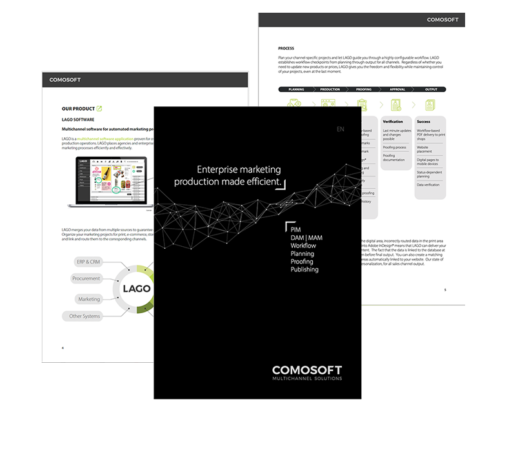Trends to Watch: What’s Next in Multichannel Marketing
Companies that employ multichannel marketing approaches benefit significantly from these strategies. Why is this? It’s because that’s how today’s consumers shop.
In fact, 95% of modern consumers use 3+ channels to make decisions before purchasing. Brands that employ a multichannel strategy to meet these consumers across platforms and channels experience a 3x higher level of effectiveness in their marketing strategies.
Moreover, 47 percent of advertisers who take a multichannel approach experience a 47 percent better return on investment.
So, which trends should you watch right now? Which trends are paving new paths in the realm of multichannel marketing? Here’s what you need to know about the state of multichannel marketing today and which trends are emerging as the most influential.
The State of Multichannel Marketing and Consumer Expectations
There’s a reason that 95 percent of marketers report that employing multichannel marketing strategies has a significant, positive impact on their business.
By employing an array of communication avenues, brands can connect with consumers wherever they are, on their terms, and foster strong connections and a sense of reliability. Why is this? When brands operate where consumers are – on multiple fronts – it’s far easier to engage with and retain their audience.
Here’s what you need to know about the efficacy of multichannel marketing in 2024:
- Brands that use 2+ marketing channels for a single campaign experience an average engagement rate that’s 166 % higher than those that only use one channel per campaign.
- Seventy-two percent of consumers prefer to engage with the brands they shop for via a multichannel approach.
- Brands that employ a multichannel marketing approach have a higher yearly customer retention rate – 91 % higher than those that do not use multiple channels in a marketing campaign.
It increases consumer awareness by delivering a consistent message to your target audience across many platforms. This helps foster brand identification and awareness, boost conversion, and improve engagement.
It provides several touchpoints to your target audience, which also helps to cover the entire marketing funnel and all the points across the conversion process to re-engage and nurture leads through the sales funnel.
It plays a vital role in remarketing, displaying a unified message across channels, and highlighting a customer’s previous brand interactions and behaviors, such as starting to make a purchase.
Noteworthy Trends in Multichannel Marketing
As with all digital trends, multichannel marketing shifts to adapt to a changing marketplace, the needs and wants of consumers, and the emergence of new technical breakthroughs. It’s essential to keep current with these changing trends to expand your reach and foster customer engagement.
While not every trend is suitable for every brand, being aware of these trends means you can pick and choose from the most successful strategies to find what works best for your brand. Here are some of the biggest trends in multichannel marketing that are worthy of attention in 2024 and beyond:
The Continued Rise of Hyper-Personalization
Hyper-personalization will continue to be an essential aspect of multichannel marketing. It has evolved in capability and complexity over the years. Today, hyper-personalization goes way past greeting a customer by name in an email; it means harnessing big data, artificial intelligence, and analytical tools to gain new insights into consumer behavior and provide each consumer with focused, personalized suggestions.
This includes taking steps like:
- Analyzing customer interactions and browsing patterns
- Assessing a customer’s purchase history
- Comparing these behaviors with personal details like demographics
With this kind of data in hand, your multichannel marketing strategies can include highly targeted content. Using tools like AI, you can process and synthesize this data to power incredibly tailored marketing efforts and apply this knowledge to how you use your digital assets.
Voice Search Optimization
Voice assistants and smart speakers like Siri and Alexa have been around for quite some time. Still, voice search optimization has recently emerged as a crucial element in today’s marketing strategies. 36.6 percent of US consumers use voice search tools today, making voice search optimization essential to any solid multichannel marketing strategy.
What does this mean for marketing teams? Optimizing your content (and digital assets) for voice search is a must to ensure your content is discoverable and high-ranking in voice-based queries.
This means marketers must rethink their past search engine optimization (SEO) efforts and digital asset metadata, naming, and governance policies to include more conversational language and long-tail keywords.
Making Social Media Shoppable
Social media platforms like TikTok and Instagram are forever changing the face of multichannel marketing—and selling—with shoppable social media posts, stories, and shops. If you have product information management (PIM) and eCommerce selling tools, you can encourage your customers to interact with your products in new, exciting ways.
With the introduction of shoppable social media, customers can drastically shorten their buying experience, discovering products and purchasing them in just a few taps on their phones. This eliminates the barrier of switching to a separate external web browser, app, or eCommerce platform. It’s a seamless, convenient experience driving conversion rates and simplifying the buying process.
Living in a World of Augmented Reality and Virtual Reality
Augmented Reality (AR) and Virtual Reality (VR) have become major disruptors in multichannel marketing, and many of today’s consumers love the immersive, ‘nontraditional’ experience these technologies provide.
Customers can visually interact with products and emulate a real-life experience before ever making a purchase, testing products out in a variety of ways:

- Trying on clothes or testing out cosmetics virtually
- Imagining what a piece of furniture or a home decor item will look like in their home
- Testing out products through virtual product demonstrations and other fully immersive digital experiences
With this kind of immersive experience, customers develop a stronger bond with the products they buy and the brands they are buying them from; it’s a great way to nurture buying confidence and cut down on hesitancy during the purchasing process.
The Importance of Data Privacy for Consumer Trust
Today’s consumers are data savvy and protective of their information. Marketers must ramp up their efforts to communicate data transparency on every channel as they learn more about data privacy.
To foster consumer confidence and brand trust, marketers must stress the security measures they take to keep customer data safe. One way to put customers at ease regarding data privacy is to ask for express agreement to use consumer data across channels – this is especially important for multichannel marketing strategies that exchange customer data across various platforms and selling or marketing channels.
Transparency Regarding Responsible Practices
Modern consumers want to know that when they make a purchase, they also invest in the future they wish to see. That’s why transparency regarding sustainable, eco-friendly, and socially responsible practices to meet consumer demand is more critical than ever.
According to the World Economic Forum, brands that take on a “nature-positive” strategy and work to benefit the environment can increase their yearly revenue by as much as $10.1 trillion and create 395 million more jobs by 2030.
But doing the work of creating more socially responsible and environmentally friendly practices can only go so far if you aren’t sharing this information with consumers. This might mean adopting—and sharing access channels—what’s called a Triple Growth Strategy, which accounts for three things:
Social Growth
Helping people
Economic Growth
Earning a profit
Protecting the Environment
Employing eco-friendly and sustainable practices.
Keep Current with Today’s Multichannel Marketing Trends with Comosoft
As multichannel marketing grows and evolves, you need a robust solution to streamline your workflows, manage your assets, produce your layouts, and unify your selling platforms. LAGO by Comosoft is the only suite of solutions on the market that work harmoniously to do just that—making it simple and efficient to meet your customers wherever they are, no matter the platform.
LAGO automates the entire multichannel marketing process, optimizing your workflows and reducing the time and resources required to produce quality marketing materials. It’s a Product Information Management (PIM), Digital Asset Management (DAM), and Marketing Production solution in one. It includes an integrated, checkpoint-based collaborative workflow solution that’s complete with its own proofing system.
Integrate your graphics department into the multichannel marketing process with LAGO Layout.
Take control of complex product data and metadata across platforms with Comosoft’s PIM solutions.
Consolidate digital assets, keep these assets updated across every channel, and track what assets work best for you with Comosoft’s DAM solution.
Ready to learn more? Download the LAGO by Comosoft Brochure for a more detailed overview of how our multitool solution can elevate your multichannel marketing efforts.
